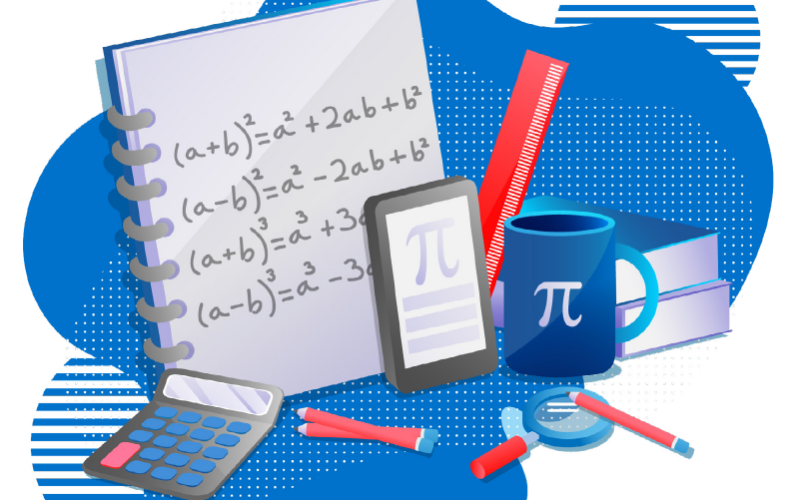Teaching GED® Math

by Brandie Millar
Teaching GED® math requires a comprehensive understanding of adult learners’ needs and effective instructional strategies.
Teaching GED® Math can be a challenging task for educators as it requires the effective delivery of mathematical concepts to a diverse range of learners. It requires an understanding of the unique needs of adult learners, effective instructional strategies, and the ability to create a supportive learning environment.
One of the first steps in teaching math to GED® students is to assess the learners’ current level of mathematical knowledge and skills. This initial effort helps an instructor understand the learners’ strengths and weaknesses in order to develop an appropriate curriculum that addresses their needs.
Once the learners’ level of mathematical proficiency is determined, the instructor can develop a curriculum that is aligned with the GED® test. The curriculum should cover all the topics that will be tested in the GED® math exam, including algebra, geometry, statistics, and probability. There are many resources available to help teachers develop their plan of attack for math. A few of these options, which are free for teachers, include:
- Khan Academy: A favorite of many educators, Khan Academy provides videos, practice items, and helpful texts for students.
- Light and Salt Learning: A resource that provides full lectures by the creator in a variety of math subjects, this site also provides different levels of practice and many videos showing problems worked out for students.
- CK-12: Although not math-centered, CK-12 provides many textbook-type resources that allow teachers to assign work to students if they like.
- Literacy Minnesota: This site provides lists tailored toward the GED® math test and lists out its contents to match those on the GED® test. The site includes everything a teacher would need for a GED® math lesson including lesson plans, warm ups, vocabulary, practice (many different methods), and assessments.
- ChatGPT: This is new for most teachers, but don’t let AI scare you! You can use ChatGPT to create practice problems in a variety of levels to meet the needs of students.
Teaching strategies should be tailored to meet the needs of adult learners. It is essential to recognize that adult learners have different learning styles and experience than younger students. Thus, instructors should use teaching methods that incorporate real-world examples, hands-on activities, and practical applications to make the material more engaging and relevant.
Another essential aspect of teaching GED® math is to create a supportive learning environment. Adult learners often have significant life experience, which can be incorporated into the curriculum to make learning more engaging and relevant. Instructors should also create a classroom atmosphere that fosters a sense of community and encourages learners to feel comfortable asking questions and participating in discussions. Not being afraid to make your own mistakes as an instructor is a great way to help students feel comfortable and more confident!
Technology can also play a significant role in teaching GED® math. Interactive software, online resources (like the ones previously mentioned), and educational apps can be used to enhance the learning experience and provide additional support to learners. Technology can also help instructors to personalize the learning experience by providing adaptive learning experiences tailored to the learners’ needs.
Although it may seem more difficult, teaching GED® math online is certainly an option for those learners who cannot attend an in-person class. With a little practice from both the teacher and the student, an online class can run just a smoothly as an in-person class. Pushing a student to learn math online can also strengthen the digital skills necessary for success after the GED® diploma.
In conclusion, teaching GED® math requires a comprehensive understanding of adult learners’ needs and effective instructional strategies. The curriculum should be designed to meet the specific needs of adult learners, and teaching methods should incorporate real-world examples, hands-on activities, and practical applications. A supportive learning environment should also be created to foster a sense of community and encourage learners to feel comfortable asking questions and participating in discussions. The use of technology can also enhance the learning experience and provide additional support to learners. With the right approach and tools, instructors can effectively teach GED® math and help adult learners achieve their educational goals.
Interested in learning more about how to use ChatGPT for instruction? Read Brandie Millar’s companion article about her experience incorporating AI into her lessons!
 Brandie Millar is an adult education instructor at Laurel Ridge Community College. She has been an educator for 17 years, teaching K–12 special education for 12 years and then working with adult education for the past 5 years. She is also a curriculum writer of both adult education and high school business courses for Virtual Virginia. Brandie holds master’s degrees in business management and educational leadership.
Brandie Millar is an adult education instructor at Laurel Ridge Community College. She has been an educator for 17 years, teaching K–12 special education for 12 years and then working with adult education for the past 5 years. She is also a curriculum writer of both adult education and high school business courses for Virtual Virginia. Brandie holds master’s degrees in business management and educational leadership.